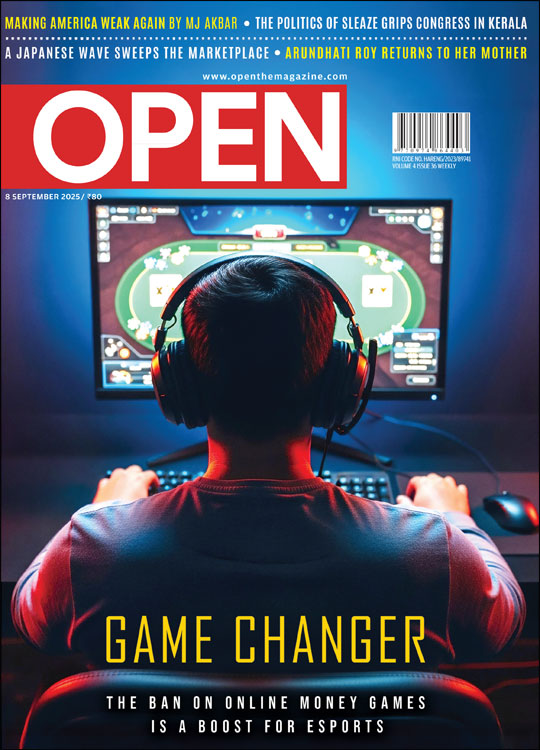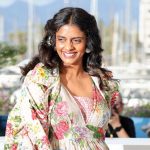Will We Ever Know the Truth?
…when the SIT report itself seems more preoccupied with finding excuses for Narendra Modi than investigating his role in the Gujarat carnage
 Hartosh Singh Bal
Hartosh Singh Bal
 Hartosh Singh Bal
|
17 May, 2012
Hartosh Singh Bal
|
17 May, 2012
/wp-content/uploads/2015/11/modi-cover-1.jpg)
…when the SIT report itself seems more preoccupied with finding excuses for Narendra Modi than investigating his role in the Gujarat carnage
Last week, the closure report of the Special Investigation Team (SIT) on the 2002 Gulberg massacre in Gujarat, prepared under the directions of India’s Supreme Court, was handed over to the trial court and became available in its entirety. Much time has been spent on contrasting the SIT report with recommendations of the amicus curiae, but not enough attention has been paid to shortcomings of the SIT report as a whole. A number of articles have appeared examining specific details of the report and contrasting it with preliminary reports filed by the SIT and some of the contradictions in what witnesses told the SIT and Nanavati Commission inquiring into the Gujarat riots of 2002.
It has already been noted how the SIT feels that a ‘mere statement of alleged words [within] the four walls of a room does not constitute any offence’. In other words, the only way a chief minister commits an illegal act is if he actually leads a mob, or holds a public rally calling for violence. It has also been noted how the SIT has suggested that Ehsan Jafri provoked a mob by firing upon it, as if the 20,000 people gathered outside his home had come to have a discussion with him and would have let him go if he had not attempted to defend himself. It has also defended statements by Modi that suggest that the ‘firing’ by Jafri and massacre at Gulberg Society were part of a chain of ‘action and reaction’ that began at Godhra. According to the SIT, this statement has been taken out of context, but it fails to suggest a context in which such a statement would ever be defensible.
What is most disturbing is that this tone and tenor runs through the entire report. If officers who in the immediate aftermath of Godhra held firm and ensured violence did not take place were transferred within the same month, the report claims these were routine administrative actions. If senior officers who acted in a manner the administration seems to have preferred—thus inviting reason for criticism of their handling of the violence—were rewarded with plum government posts or post-retirement benefits, the SIT sees this only as evidence of their capabilities. If officials of the Modi administration were caught on tape tutoring witnesses, the SIT casts suspicion on the intentions of the person who attempted the clandestine recording.
Here, we consider some aspects of the report that have not been examined in detail yet. What they show is how the SIT has gone out of its way to disregard the evidence it has collected and reached conclusions that its own evidence does not allow for. Beyond the Gulberg massacre, the three aspects of the report excerpted here suggest 1) a role played by Modi, 2) involvement of the VHP, 3) how the Gujarat government acted against officers who did a good job immediately after the riots—including coming down heavily on elements of the Sangh, and 4) that senior figures of the government tutored witnesses.
ALLEGATION II
The CM’s decision to bring dead bodies of victims of the Godhra train fire incident to Ahmedabad and parade them in Ahmedabad city
WHAT THE SIT FOUND
‘Shri Narendra Modi, Chief Minister, arrived at Godhra by helicopter sometime between 1600 to 1700 hrs …he straightaway drove to the Godhra Railway Station. CM inspected the spot and talked to some of the persons gathered there. Since curfew had been imposed in the Godhra town, the CM decided to go to the Collectorate and meet the people as well as the press. At the same time Shri Gordhan Zadafiya and Shri Prabhasinh Chauhan, the then minister for civil aviation & pilgrimage and being a local MLA, had also come and they all went to the Collectorate. Smt Jayanti Ravi (Collector, Godhra) has stated that in the meeting held at the Collectorate, one Shri Jaydeep Patel, a VHP activist was also present. Smt Jayati Patel has also stated that after holding discussions, a unanimous decision was taken that the dead bodies, which had been identified should be handed over to their relatives at Godhra itself and those bodies whose legal heirs or guardians had not come, could be sent to Sola Civil Hospital, Ahmedabad, since they belonged to Sabarmati Express heading towards Ahmedabad. Smt Jayanti Ravi has categorically denied that [this] decision was taken against her wishes. The decision to send the bodies to Sola Civil Hospital was taken in view of the fact that it was situated on the outskirts of Ahmedabad City and thus away from crowded area for security reasons….’
‘54 bodies were to be sent with police escort to Sola Civil Hospital, Ahmedabad. Further, Shri Jaydeep Patel of VHP was to accompany them.’
‘Enquiries further revealed that Shri M.L. Nalvaya, the then Mamaldar & Executive Magistrate issued a letter addressed to Dr Jaydeep Patel of VHP, in which he mentioned that 54 dead bodies were being sent through five trucks…One Shri Hasmukh T. Patel of Vishwa Hindu Parishad had acknowledged the dead bodies. It may be mentioned here that the handing over of the dead bodies to their legal heirs/guardians was the duty of the railway police who had registered a case in connection with this incident. Shri M.L. Nalvaya has stated that these dead bodies were handed over officially to Shri Jaydeep Patel and Shri Hasmukh T. Patel of VHP as per the instructions given by Smt Jayanti S. Ravi, DM and late B.M. Damor, ADM, Godhra… However, Smt Jayanti Ravi has stated that no such instructions were given…’
‘Shri Raju Bhargava, the then Superintendent of Police, Godhra, has stated that since there was a curfew in the town, he had arranged for four mini trucks … for the transportation of the aforesaid dead bodies. He also arranged for the police escort with a police gypsy…’
‘The above facts would go to establish that though a letter had been addressed by Mamalatdar, Godhra, to Shri Jaydeep Patel of VHP, yet the dead bodies were escorted by the police from Godhra to Ahmedabad, where the same were taken charge of by the hospital authorities, District Administrative and Police Officers, and handed over to the kith and kin of deceased persons after taking proper receipt…’
‘Shri P.C. Pande, the then CP, Ahmedabad, justifies the decision to transport the dead bodies …[and] has stated that there has been no parading of dead bodies inasmuch as the trucks carrying the dead bodies under police escort reached Ahmedabad City between 0330 hrs to 0400 hrs on 28-02-2002, which means they had started from Godhra at least three hrs earlier and [so] there was no one to see them on the highway [in the] dead of night.’
WHAT THE SIT CONCLUDES
‘In view of the aforesaid discussions, the allegations that the CM’s decision to bring the dead bodies of those killed in the Godhra carnage to Ahmedabad was with a view to parade them in the city is not established. Further, the allegations that the dead bodies were handed over to Shri Jaydeep Patel, is also not established, inasmuch as he only accompanied the dead bodies from Godhra to Ahmedabad, and the custody of the dead bodies remained with the police escort and thereafter with the Sola Civil Hospital Authorities, Administrative and Police authorities. The allegation that the dead bodies were transported to Ahmedabad against the wishes of Smt Jayanti Ravi is proved to be incorrect. Shri M.L. Nalvaya Mamalatdar had acted in an irresponsible manner by issuing a letter in the name Shri Jaydeep Patel in token of having handed over the dead bodies, which were case property, is being dealt with departmentally for this place.’
WHAT THE FACTS FROM THE SIT REPORT INDICATE
The decision to transport the bodies to Ahmedabad was taken at a meeting chaired by Modi where a VHP representative was present. According to written records and facts as stated by the SIT, the bodies were handed over to VHP men and transported under police escort to Ahmedabad. The police escort did not have custody of the bodies. These reached Ahmedabad in the morning, where during the day they were transported in trucks while a curfew was not in force. Curfew seems to have been imposed only after funeral processions ended. This indicates a series of administrative decisions starting with the CM, involving the VHP, that culminated in violence in Ahmedabad and elsewhere.
ALLEGATION VI
Officers from field executive posts were transferred (by the CM), in the thick of the riots in 2002, despite the DGP’s objection, so as to facilitate placement of those who were willing to subvert the system for political and electoral benefits (as narrated in complaint), wherein instances of punishment, ill-treatment etc are listed in respect of the following officers: 1) Rahul Sharma 2) Vivek Srivastava 3) Himanshi Bhatt 4) MD Antani 5) RB Sreekumar and 6) Satish Chandra Verma.
WHAT THE SIT FOUND IN SOME OF THESE CASES
Rahul Sharma, who had been appointed SP of Bhavnagar on 16 February 2002, told the SIT that Gordan Zadafia, minister of state for home affairs, had called him on 16 March 2002 (the Godhra burning took place on 26 February 2002) and told him he had done a good job controlling the riots as SP of Bhavnagar, but ‘the ratio of deaths, as a result of police firing in the riots, was not proper i.e more number of deaths of Hindus than Muslims’. Sharma told the SIT that on 23 March 2002, a mosque was attacked by a mob, following which 21 persons were arrested and he was pressured by local leaders to release them, to which he did not agree. As a result, there was a difference of opinion with the Collector of Bhavnagar, IGP of Junagadh and DGP. Rahul Sharma was relieved of his charge as SP of Bhavnagar on 26 March 2002, barely a month after taking over. The SIT report notes: ‘However, Shri Rahul Sharma has stated that he would not be able to comment on the circumstances that led to his transfer from Bhavnagar …as transfer posting is the prerogative of the government.’
Vivek Srivastava was appointed SP of Kutch in January 2001. After the Godhra incident, no killings were reported anywhere in the district. Srivastava told the SIT that ‘a few days after the Godhra incident, a Muslim family had been assaulted with sharp edged weapons at a dargah outside Nakhatrana town by some unknown miscreants, causing injury to two persons’. He told the SIT that a case u/s 307 IPC was registered and a Home-Guard Commandant with BJP leanings of Kutch district had been arrested and chargesheeted on completion of the investigation. Srivastava told the SIT that ‘he got a few phone calls from the office of Home Minister and Chief Minister asking him about details of the case and also whether there was adequate evidence against all the accused’. Srivastava confirmed that sufficient evidence was available. He was relieved of his charge in the last week of March. The SIT adds, ‘Vivek Srivastava was unwilling to comment upon the reasons, as according to him, transfers were the prerogative of the government.’
Consider the case of Satish Chandra Verma, DIG, Border Range. The SIT notes that Verma stated that ‘a criminal case had been registered in Radhanpur PS in the context of rioting between Hindu and Muslim crowds after the Godhra carnage … in which two Muslims had reportedly died of police firing. However, it was brought to his notice that the death of these two Muslims by police firing was not substantiated by available evidence and instead evidence was available against private individuals including Shri Shankar Chaudhary, MLA, for committing acts which led to the death of these persons.’ The report says he also stated ‘that he had issued a formal order for the arrest of Shri Shankar Chaudhary, MLA, for murder and attempt to murder’ and also that ‘sometime later, he was transferred as Principal State Reserve Police Training Centre, Chawky, Junagadh.’ Again, the SIT adds: ‘However, Shri Verma has stated that he can not say that this transfer was a consequence of this aforesaid order. He has also stated that he cannot call the post of Principal of a training institution unimportant.’
WHAT THE SIT CONCLUDES
‘The statements [of these officers]… before the SIT would go to show that though their transfers were immediately after certain events in their jurisdiction, yet according to them postings/transfers being the prerogative of the Govt., the same cannot be linked to certain events that took place immediately before their transfers’.
WHAT THE FACTS INDICATE
The officers are serving policemen; they cannot speculate on government decisions, but the repercussions of their actions against members of the Sangh are clear. These sent a clear message across the state that only officials toeing the government line and going easy on Sangh elements involved in the riots would continue in field postings. None of these postings could have taken place without Modi’s approval.
ALLEGATION XIX
The State Home Secretary Shri GC Murmu was presumably detailed for tutoring, cajoling and even intimidating officials deposing before the Nanavati Commission so that they do not tell the truth and harm the interests of the CM and ruling party, as narrated in the third affidavit of Shri RB Sreekumar.
‘Sreekumar [Additional DG of Intelligence in the aftermath of Godhra whose affidavits before the commission have been a source of great discomfort for Modi] has stated that … G.C. Murmu, Home Secretary informed him that a briefing session had been convened by him in a private guest house … to guide him [on] the cross-examination before the Nanavati Commission fixed for 31-8-04 and that Shri Arvind Pandya, Govt Advocate, would also attend the sessions…According to Sreekumar, the meeting was clandestine and illegal and had been arranged in a private guest house instead of conference Hall available in the Home Department…[he] had carried an electronic recording device … [he] has stated that Murmu had directed him not to be hasty and hurried in answering questions…Murmu told him not to comment on action taken by Govt. on his situation assessment reports…Murmu advised Sreekumar to say that his job was to report and there was no question as to what happened afterwards…Murmu told him that he should tell the Commission that no better steps could be taken…’
The SIT, which has this conversation on tape, spoke to Murmu about this session: ‘According to Murmu, some Govt officials summoned used to meet the Advocates concerned for briefing and he used to be present along with the Govt. records for their reference. He has admitted to have attended a conference with Sreekumar and Pandya… he has further stated that since Pandya was not good at English and Sreekumar was not very good at Gujrati communication problems arose and he intervened sometime to translate from Gujrati to English and vice versa. He has denied to have tutored Sreekumar… [and] stated Sreekumar never disclosed these facts before the Commission…Murmu has alleged the authenticity of the CD had not been established and there was every chance of Sreekumar tampering with the same…’
WHAT THE SIT CONCLUDES
‘Pandya briefed Sreekumar about the modalities for his examination and advised him about do’s and don’t’s. Rest of the recorded conversation is absolutely absurd, confusing and does not make sense. However, Sreekumar has taken his own views, drawn his own conclusions, filled in the gaps on assumptions … to support his versions… in his statement [he] has given his own comments, observations, conclusions and has also appreciated his own statement in his own manner, which shows he is not a genuine witness and he wants to influence the inquiry officer to believe him… Surprisingly, Sreekumar did not reveal these facts before the Nanavati Commission …on 31-07-2004 and on 06-10-2004. Sreekumar was superseded in his promotion to the rank of DG on 23-02-2005…It was only on 09-04-2005 …when he enclosed the transcript of the recordings …All these facts would go to show that Sreekumar had anticipated these events and… recorded these conversations clandestinely…this would prove that actions on the part of Sreekumar were motivated with a view to let down the Govt. after his supercession…In view of the aforesaid… it is clearly established that the version of Sreekumar was motivated and can not be relied upon, The allegation is, therefore, not established.’
WHAT THE FACTS INDICATE
There is a tape recording whose genuineness the SIT could have easily established. It has evidence of the home secretary and government advocate trying to lead a key witness. In fact, I have heard the tape and reported on it in March 2005 before it was submitted to the Commission. It is neither confused nor garbled, as the SIT claims. The SIT’s attempts at character assassination of this witness are clear in the report; his supercession could well be a reason he made the tape public, but irrespective of his motives, the evidence on tape holds. Nothing the SIT says about Sreekumar should detract from the fact that a tape exists that contains evidence of an important witness being tutored by none other than the state’s home secretary.
These three allegations are not the only troubling aspects of the SIT report. Reading any section of it throws up questions about how the investigation has been approached and what it was seeking to achieve. The one thing this SIT report is not is a closure—either for victims of the Gujarat violence or for the investigation of what actually transpired in 2002 and the role Modi played as head of the state government

/wp-content/uploads/2025/08/Cover_Game-changer.jpg)











More Columns
An India-China Complete Re-set? Desirable but Unlikely Krishnan Srinivasan
Kani Kusruti: Locarno Calling Kaveree Bamzai
Return to Radio Kashmir Kaveree Bamzai